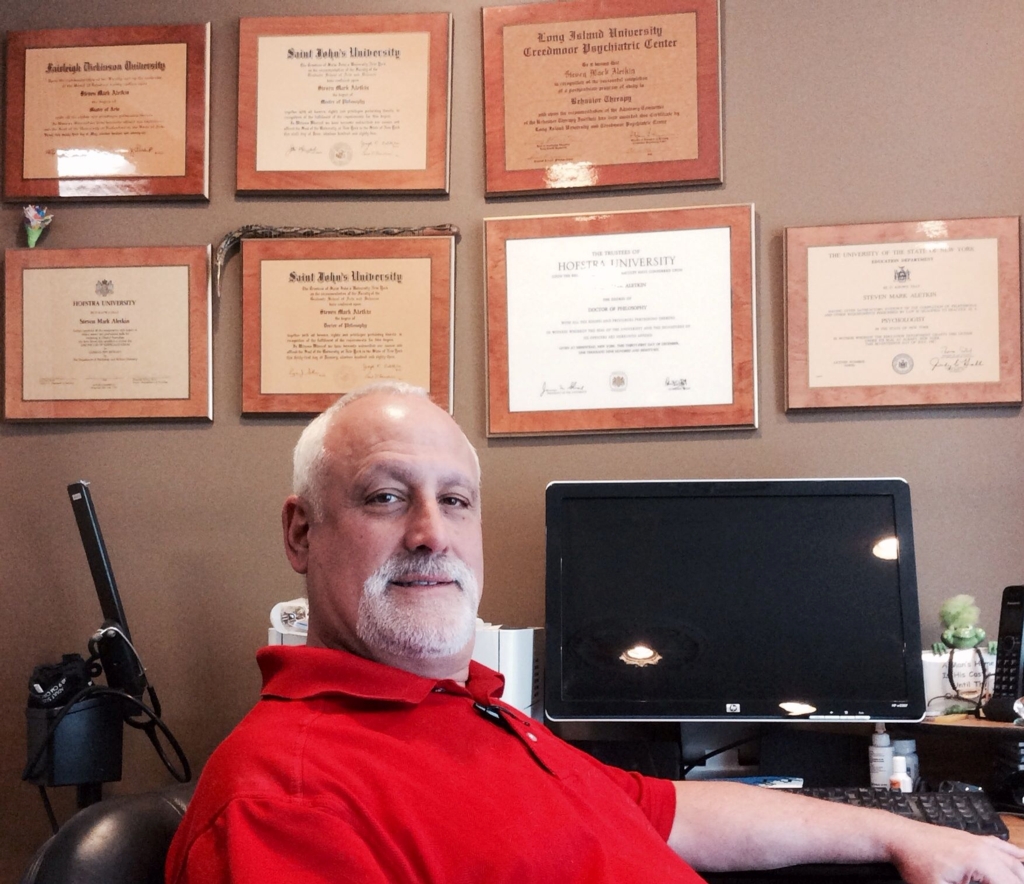
Dr. Steven Aletkin
One of the major problems that teachers are facing in their classrooms is the management of students’ behavior of who are diagnosed with ADHD, which is a neurobiological disorder, characterized by inattentiveness, hyperactivity, motivational difficulties and impulsivity. In the U.S. since 2007, approximately 5.4 million children ages 4-17 have been diagnosed with ADHD. Males are three to four times more likely than girls to be diagnosed with the hyperactive/impulsive or combined subtypes. Males are equally as likely as females to be diagnosed with the inattentive subtype of ADHD.
Symptoms of ADHD can result in a significant decline in academic, social and interpersonal performance. ADHD occurs throughout the full range of intelligence. Children with ADHD are able to learn, but have difficulty in school because of poor organization, time management, low motivation to complete tasks when bored, impulsivity/hyperactivity and distractibility. Children diagnosed with ADHD can also meet the diagnostic criteria for a specific type of learning disability, oppositional defiant disorder, conduct disorder, depression and anxiety. ADHD is, to a large extent, a genetic developmental disorder that often is found in other "close" family members.
In an interview with Dr. Steven Aletkin, a Clinical Psychologist specializing in treatment of ADHD, he stated that there are many more children who have ADHD than have been diagnosed with the disorder. Contrary to popular belief, the disorder is actually under diagnosed. While the number of children ages 4-17 that has been diagnosed with ADHD appears very high, there is evidence to suggest that many adults who have ADHD are yet to be properly diagnosed. The professional literature is clear, and suggests that children are not over diagnosed and that professionals do not diagnose children properly. A diagnostic protocol should include, but not be limited to, a complete medical, family and social history. In addition, blood tests and EEG should be utilized to rule out any co-morbid medical condition. Comprehensive questionnaire analysis, by teachers and parents, and a comprehensive neuropsychological assessment, which includes a continuous performance test, should be administered by appropriate professionals.
What we know about ADHD and medication?
Once diagnosed, children will benefit from a "multimodal" approach to treatment. Approximately 60 to 80% of children will show improvement in one or more areas of functioning (i.e. social, emotional, academic, interpersonal) if placed on appropriate medication. These medications include the stimulants, amphetamines, Strattera, guanfacine and clonidine, to name a few. In addition, behavior modification and specific skills training (e.g. organizational skills and time management, anger management, social skills) have resulted in a significant positive behavioral change only if reinforced by those in the child's environment (e.g. parents and teachers). Timely assessment is required to accurately assess the efficacy of each of these treatment modalities. It’s important to check in with the physician about the medication type or dosage. Kids need their meds adjusted as they get older and bigger.
Who Can Diagnose ADHD, and what difference does it make?
The diagnosis of ADHD should be made “only” by professionals with specific training in the assessment of ADHD, such as: child psychiatrists, psychologists, developmental/behavioral pediatricians, behavioral neurologists, and clinical social workers.
What is your approach to treating ADHD?
Today 60 to 80 % of children who are diagnosed with ADHD would benefit from taking appropriate medication. One of the most commonly utilized drugs is methylphenidate, known by the trade name Ritalin. Other drugs include the mixed amphetamine salts (i.e. Adderall), Vyvanse, Strattera, guanfacine and clonidine. In addition to medication, behavior modification, which, in this case, is used more as a motivational rather than learning tool, specific skills training, family and group therapy and didactic therapy can be utilized when appropriate.
What are some of the more serious consequences of ADHD?
If left undiagnosed, people with ADHD are more likely to experience academic problems, divorce, job termination, social and interpersonal difficulties and driving problems including more tickets and accidents, to name a few.
What advice can you give to teachers to help improve the classroom behavior of children with ADHD?
Children with ADHD have difficulty completing tasks that they define as boring, long or difficult. Teachers need to develop novel ways of teaching to increase the student's interest level. In addition, assignments should be kept short, which will increase compliance. To understand how a child learns (e.g. visual vs. auditory learner) will allow the teacher to develop specific strategies to improve students’ academic performance. Teacher need to learn different procedures to deal with this challenge in their classroom.












